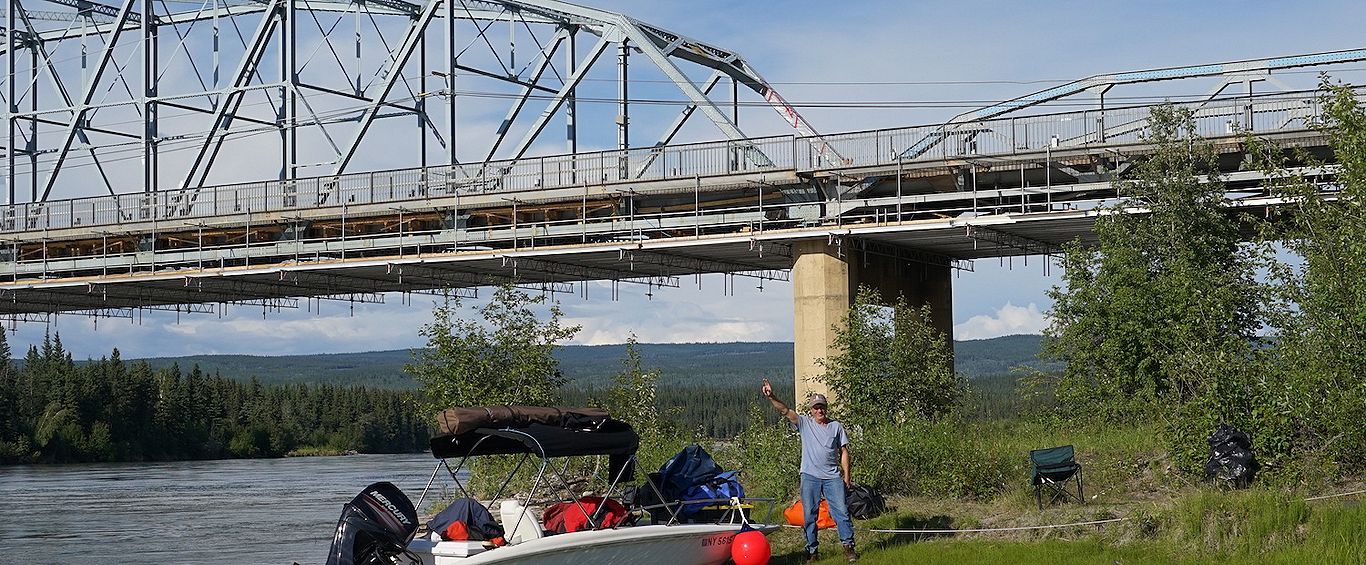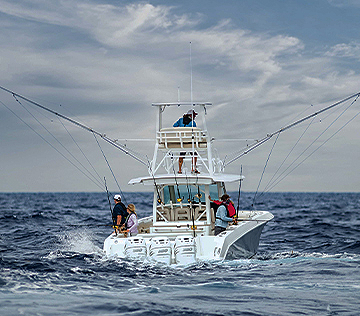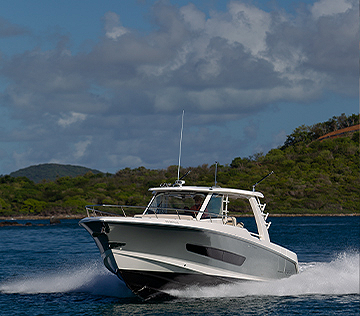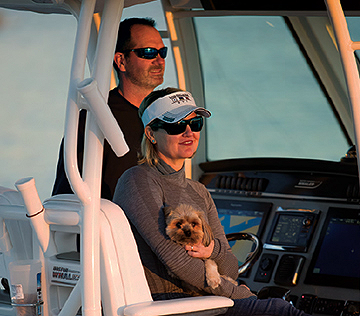
YUKON RIVER RUN
A boater navigates 500 miles of northern Canadian wilderness on his Super Sport with just a hand-drawn chart and a trusty depth-sounder to guide him.
Back in 1972, I watched a movie in my 4th grade class about a group of guys who built and floated a raft down the Yukon River. I was captivated by their story and vowed to make a similar journey at some point in my life.
Many years later, after almost a full year of planning, I towed my Boston Whaler Super Sport from my hometown of Youngstown, New York, 3,500 miles to Whitehorse in the Yukon Territory. I averaged 700 miles per day on the road, which worked out to fifteen hours of driving per day. My objective was to transit the Yukon River from Whitehorse to Dawson City, which is a 500-mile run. On Saturday, June 17, I departed from Whitehorse with 600 pounds of gear and a good friend of mine from Colorado.
During my research before attempting this trip, I was not able to find any information on anyone who had done this by powerboat, as everyone seemed to do it by canoe or kayak. I figured that since paddle wheelers had done it more than a hundred years ago, I could do it too—especially in an unsinkable boat!
Another factor adding to the difficulty was that there are no official navigation charts for the area. Our only navigation reference material was a hand-drawn chart and our depth sounder.
The first two days were uneventful and the weather was perfect. While crossing the only open water of Lake Laberge, the lake was smooth as glass and presented many great photo opportunities. Mind you, the Yukon is grizzly territory, and since we were camping in tents I took just about every precaution possible, from bear spray and firearms to a portable electric fence!
It was on day three when I let my friend take the helm (after spending a great deal of time providing instructions) that we ran aground on a shoal in the middle of the river. We were close to 50 miles from the closest highway and literally in the middle of nowhere.
Considering our limited options, I determined that our only way out was to dig a channel in the riverbed to continue downstream—a daunting task, given the current of the Yukon, which averages 5 mph, and the water’s very cold temperature, due to its being glacier and snow melt. After about three hours of digging the riverbed by hand, were we able to free the boat and continue our passage.
If we hadn’t been successful, I would have had to activate the EPIRB (emergency position indicating radio beacon). I did have visions of being airlifted out and was very sad at the thought of having to leave everything behind. Maybe that gave me additional energy to keep digging that channel!
The rest of the trip was quite uneventful in comparison. In all, we spent nine days on the water. It was truly a once-in-a-lifetime experience.
After our Yukon River run, I trailered the boat to Skagway, Alaska, and spent a week fishing on Glacier Bay. Skagway has to be the most beautiful area in the world for boating: 10,000-foot snowcapped mountains that meet directly with the sea are a sight to behold.
Boston Whalers are a bit of a rarity in Alaska as most boaters tend to use aluminum craft. I bought the Whaler for the sole purpose of this trip and had 100 percent confidence that I would make it home in one piece. It never let me down. Had I been in an aluminum boat and grounded where I did, the boat would likely still be there!
--
This is for general information purposes only. Your use or reliance on any of the information in this Blog is solely at your own risk. Under no circumstance will we have any liability for any loss or damage of any kind incurred as a result of the use of any of the information provided.
Options and features mentioned subject to change. Please confirm availability of all accessories and equipment with an authorized Boston Whaler Dealer.



